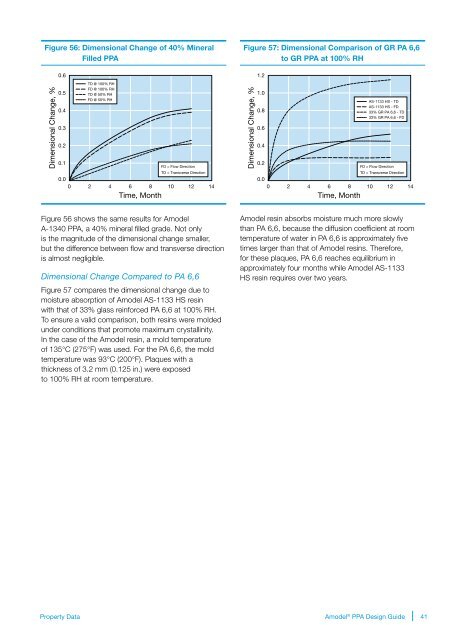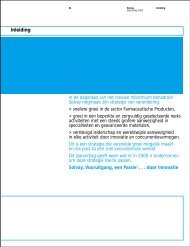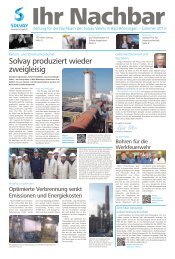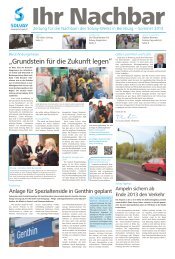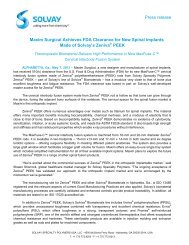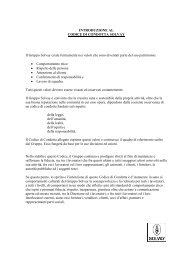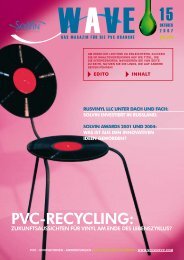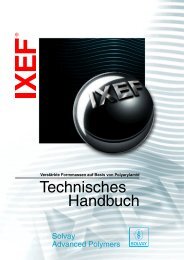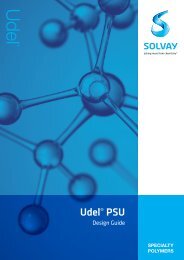Design Guide - Solvay Plastics
Design Guide - Solvay Plastics
Design Guide - Solvay Plastics
Create successful ePaper yourself
Turn your PDF publications into a flip-book with our unique Google optimized e-Paper software.
Figure 56: Dimensional Change of 40% Mineral<br />
Filled PPA<br />
Figure 57: Dimensional Comparison of GR PA 6,6<br />
to GR PPA at 100% RH<br />
Dimensional Change, %<br />
0.6<br />
0.5<br />
0.4<br />
0.3<br />
0.2<br />
0.1<br />
0.0<br />
TD @ 100% RH<br />
FD @ 100% RH<br />
TD @ 50% RH<br />
FD @ 50% RH<br />
FD = Flow Direction<br />
TD = Transverse Direction<br />
0 2 4 6 8 10 12 14<br />
Time, Month<br />
Dimensional Change, %<br />
1.2<br />
1.0<br />
0.8<br />
0.6<br />
0.4<br />
0.2<br />
0.0<br />
AS-1133 HS - TD<br />
AS-1133 HS - FD<br />
33% GR PA 6,6 - TD<br />
33% GR PA 6,6 - FD<br />
FD = Flow Direction<br />
TD = Transverse Direction<br />
0 2 4 6 8 10 12 14<br />
Time, Month<br />
Figure 56 shows the same results for Amodel<br />
A-1340 PPA, a 40% mineral filled grade. Not only<br />
is the magnitude of the dimensional change smaller,<br />
but the difference between flow and transverse direction<br />
is almost negligible.<br />
Dimensional Change Compared to PA 6,6<br />
Figure 57 compares the dimensional change due to<br />
moisture absorption of Amodel AS-1133 HS resin<br />
with that of 33% glass reinforced PA 6,6 at 100% RH.<br />
To ensure a valid comparison, both resins were molded<br />
under conditions that promote maximum crystallinity.<br />
In the case of the Amodel resin, a mold temperature<br />
of 135°C (275°F) was used. For the PA 6,6, the mold<br />
temperature was 93°C (200°F). Plaques with a<br />
thickness of 3.2 mm (0.125 in.) were exposed<br />
to 100% RH at room temperature.<br />
Amodel resin absorbs moisture much more slowly<br />
than PA 6,6, because the diffusion coefficient at room<br />
temperature of water in PA 6,6 is approximately five<br />
times larger than that of Amodel resins. Therefore,<br />
for these plaques, PA 6,6 reaches equilibrium in<br />
approximately four months while Amodel AS-1133<br />
HS resin requires over two years.<br />
Property Data<br />
Amodel ® PPA <strong>Design</strong> <strong>Guide</strong><br />
41


